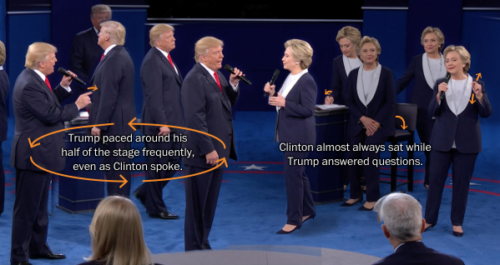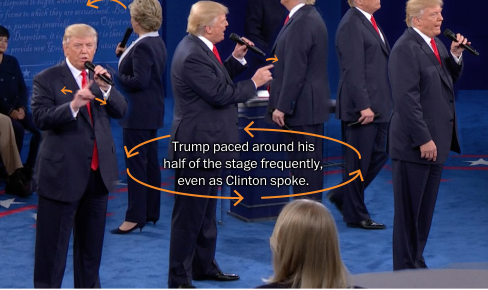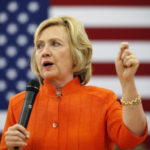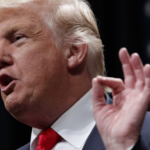
The Washington Post’s analysis of the second Presidential debate between Trump and Clinton. Photo from the Washington Post.
Model UN speeches are about more than just the content of the speeches. Delegates needing to be persuaded to support your ideas and Chairs evaluating for awards also look at your delivery and style. This includes body language — how your stance, gestures, and other physical movements impact your speech.
It’s possible that many Model UN delegates subconsciously pick up body language cues from the politicians they see on television. And in an U.S. Presidential election year, many Model UN participants are watching Presidential candidates Donald Trump and Hillary Clinton closely.
The Washington Post is obviously watching them closely, too, and they’ve done a few great pieces analyzing their body language from the debates here, here, and here. The second debate, which was done in a more intimate town hall style, was particularly analyzed as candidates did not have a podium or lectern to stand behind the entire time.
Although the proceedings of Model UN are not like a presidential debate, there are some opportunities to use Trump’s or Clinton’s tactics, particularly during Author’s Panel or when answering Questions or Points of Information as a speaker. Here are a few of those tactics:
1. Establishing Dominance on the Stage

Trump paces around the stage to establish a presence. Photo from the Washington Post.
In the second debate, Trump circled around the stage and loomed behind Clinton while she was speaking in order to establish an alpha-male dominance over his territory.
In Model UN, if you are on stage and listening to an opposing question from the audience, you could slowly and deliberately pace around the stage to draw attention to you and away from the delegate who is asking the question. It also subconsciously tells the one who’s asking the question that you as the speaker don’t care to show full attention to their question and that your pacing demonstrates confidence in answering the question. Given that it could be perceived as slightly undiplomatic by others, make sure to use this tactic only when answering a question from a known opponent to your resolution.
2. Walking Toward a Potential Vote

Clinton walks toward the voter who asked the question. Photo from the Washington Post.
In the second debate, Clinton walked toward a voter who asked a question about Obamacare in order to show empathy and care toward the voter’s question.
In Model UN, after a question is asked, you could walk slowly and in a non-intimidating way toward the one who asked the question in order to get the committee to focus their attention between you and that delegate. It shows the delegate that you heard the question and can relate to them. Given the attempt to build a connection, use this tactic for more friendly questions and those that genuinely seek to understand your resolution. Adding “thanks for the question” or “that’s a good point” while walking over can reinforce this friendly tactic.
3. Use Hand Gestures to Emphasize a Point

Clinton’s closed point hand gesture. Photo from the Washington Post.

Trump’s “ok” hand gesture. Photo from the Washington Post.
Hand gestures are universally used to emphasize a point and to connect with the audience. Clinton and Trump use different hand gestures. Clinton uses a closed point (similar to what Obama uses frequently), while Trump likes to point directly or use an “ok” hand gesture (often with the “ok” hands going from high to low for controlled emphasis).
In Model UN, there are a variety of hand gestures you can use, and it depends what you are comfortable with and if you are trying to use the hand gestures to assert yourself over a challenging question or to welcome potential allies when responding to questions. Here are some common Model UN hand gestures.
4. Smile to Empathize or Smile to Be Dismissive

Smiles by Trump and Clinton could be used in a dismissive manner.
Clinton smiles much more often than Trump. At times, the smile was to build empathy with her supporters because she probably thought what Trump was saying was ridiculous and knows her supporters would think so too. But Clinton is also criticized for sometimes smiling at inappropriate times where her smile becomes dismissive or made her look weaker.
In Model UN, you can smile in several ways. If an ally asks a good question that gives you an opportunity to reinforce your resolution, you could smile during the question and right before answering the question. Adding a “I’m glad you asked” before your answer and at the end of your answer would complete this empathy smile.
If an opposing delegate asks a challenging question, you could smile in two ways to be dismissive of their question. One way is to do more of a smirk like “I knew this was coming” and that you’re ready to launch with an immediate response once they’re done asking. The other is to smile and shake your head in a “no” fashion to show that you already disagree with the notions of their question or you find the premise of their argument to be ridiculous. In either case, stop smiling once you start answering the question to show that the smile was just to establish confidence and that you mean business when answering the question.

